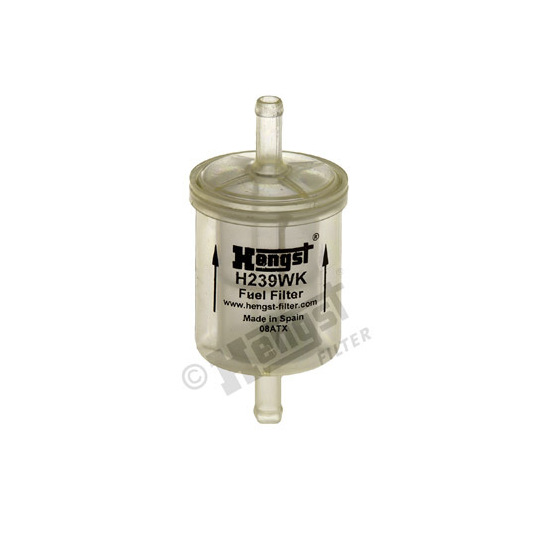by Jim Isaacs » one year ago
I’ve been flying four years now using these, clear PET housing with sintered bronze filter media. No issues at all, highly recommend them. https://www.aircraftspruce.com/pages/ep/fuelfilters/fuelfilter.php
by Sean Griffin » one year ago
Hi Jim,
No offence intended BUT an aircraft fuel filter needs to have the capacity to catch a certain amount (?) of contamination/debris before blocking.
In practice this means a large surface area. Your sintered bronze filter, is fine for a ground based engine however I would suggest, despite your experince, that you are taking an unnecessary risk.
Compare your filter with the examples below:
(not to scale)
Baldwin BF7725 BF9906 BF7850

by Jim Isaacs » one year ago
Sean,
Thanks for thinking of my safety. A few questions.
1. What exactly is this filter contaminant capacity you cite and in what professional aviation, automotive, engineering, or other safety standard, suggestion, or requirement is it stated? For example, x grams of contaminants, y ounces of water, etc. while still allowing the engine manufacturer’s required rate of clean fuel flow.
2. If you’ve discovered a flaw in my fuel system design there may be more. I need a point of comparison to a proper design. What is your aircraft fuel system design, to include all the components within your fuel system, and what are the documented standards or requirements these components must meet?
3. After I get straight on system design I also need to understand the total process to effectively manage risk. What is your aircraft fueling process?
4. What is your fuel preflight process?
I realize I’m asking for a lot of information but aviation is an information-heavy endeavor.
by Sean Griffin » one year ago
Hi Jim - WOW!!!
Before I attempt to answer your questions, I think it's important to recognise that for the most part Rotax 9 series engines are used in small, recreational aircraft, generally not certified by a Government body. I recognise that there are also factory built (certified?) aircraft in this sphere that may require the aircraft owner to use only equipment, service items, material that they approve. My point being, that automotive sourced items can be and are widely, used by this category of aircraft
1. The filters contaminant capacity will vary according to filter media area. This will be a visual assessment by the purchaser - bigger the filter, generally more media area, greater capacity to trap contaminants, without compromising fuel flow. These filters come in a wide range of sizes, choice of in/outlet orientation - the largest, I know of, is the Baldwin BF7850.
2. I know nothing of your fuel system, so can only comment on the one point, that is your use of a small sintered bronze filter(s) - which I feel are not suitable for aircraft application.
3.My aircraft fueling process? I use 98 RON ULP for preference (95 RON if 98 not available) purchased from a reputable brand provider, who appears to have a high product turnover (fresh). I collect my fuel in dedicated (my aircraft only) 20L plastic fuel containers. Decant the fuel into my aircraft, using a filter funnel, to reduce the potential for contamination of my aircraft fuel system.
4. My fuel preflight process? - I start by checking (& noting) the indicated fuel level, comparing this with the last flight. As I move around my aircraft conducting the preflight checks; Inspect/ sample of fuel from each tank - In the event of a contaminated sample, repeat sampling will be done, until a clean sample achieved. I will dip (calibrated stick) each tank & note the actual quantity - total fuel & compare with indicated - decision, to add more / or sufficient fuel for planed flight. Fuel gascolator & other fuel filters will be visually checked for contamination. Set fuel management system to known quantity - go fly.
Note: The in line filter types, that I have recommended (several manufactures) are commonly used by European small aircraft makers. They have in common; robust transparent casings, metal gauze or "plastic" mesh filter media, are lightweight and will not leak in normal use, come in a range of sizes, are relativly cheap, not realy designed to be serviced (cleaned). There would seem to be a degree of brand substitution by some suppliers - make sure you are getting the brand/quality you are paying for.
by Jim Isaacs » one year ago
Thanks Sean,
So there’s no fuel filter media capacity standard or requirement that you’re aware of for the Rotax engine? WRT #2, I asked for your fuel system design and components, not for you to attempt to comment on mine- so I can compare yours to mine to look for any other safety issues. I’m asking how is your fuel system laid out? What components do you use? Why did you choose them? Was it because of a safety requirement or standard or called for in the Installation Manual or an accepted practice, etc? E.g. how does that drop of fuel flow from leaving the tank all the way to the carburetor, and through what components does it pass enroute to the carburetor? Oh and Also when do you typically refuel? After last flight or before first flight?
|
To receive critical-to-safety information on your ROTAX Engine, please subscribe to |
This website uses cookies to manage authentication, navigation, and other functions. By using our website, you agree that we can place these types of cookies on your device.
You have declined cookies. This decision can be reversed.
You have allowed cookies to be placed on your computer. This decision can be reversed.
This website uses cookies to manage authentication, navigation, and other functions. By using our website, you agree that we can place these types of cookies on your device.
